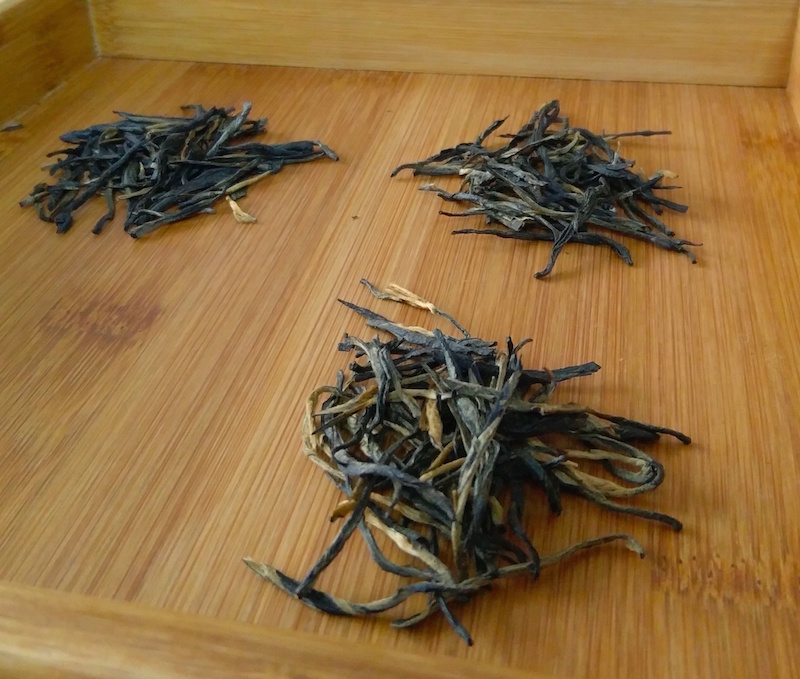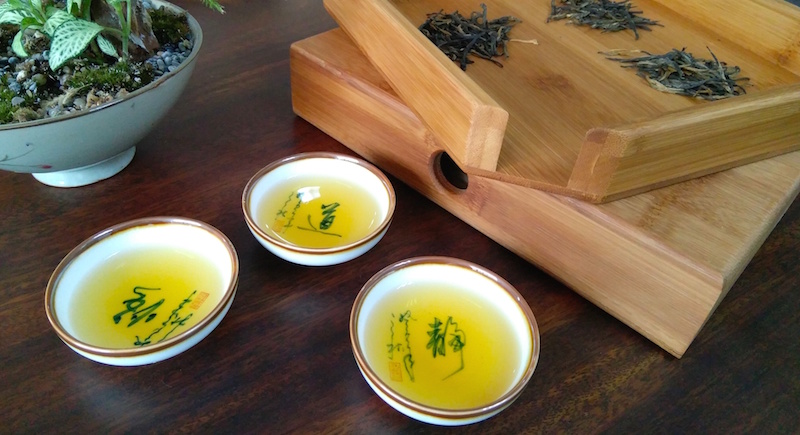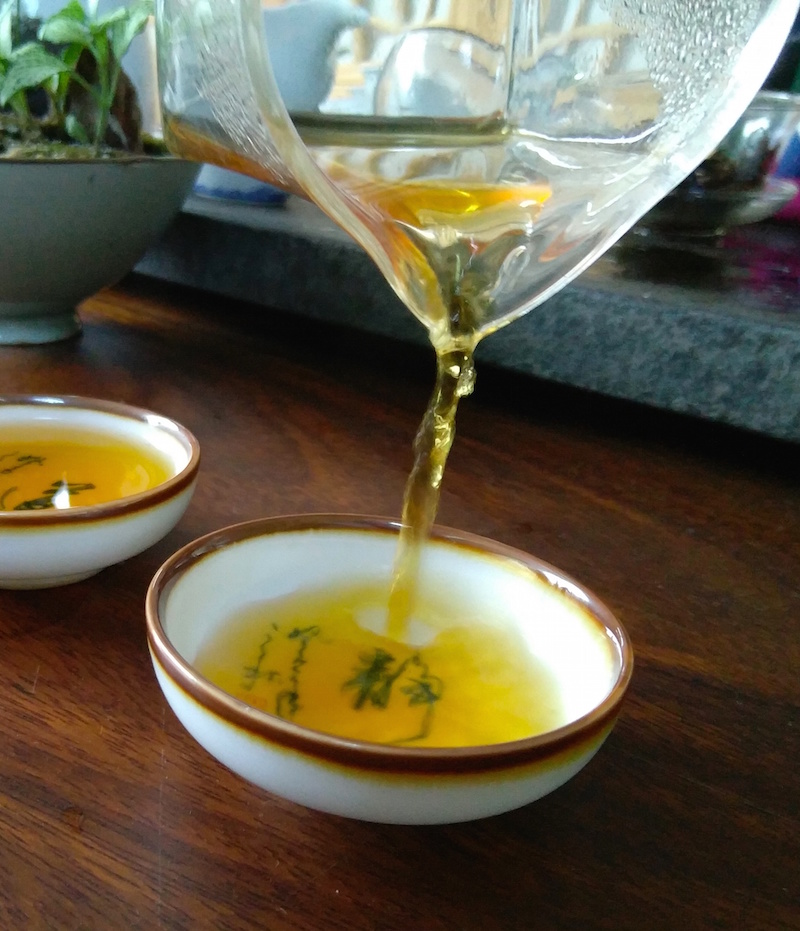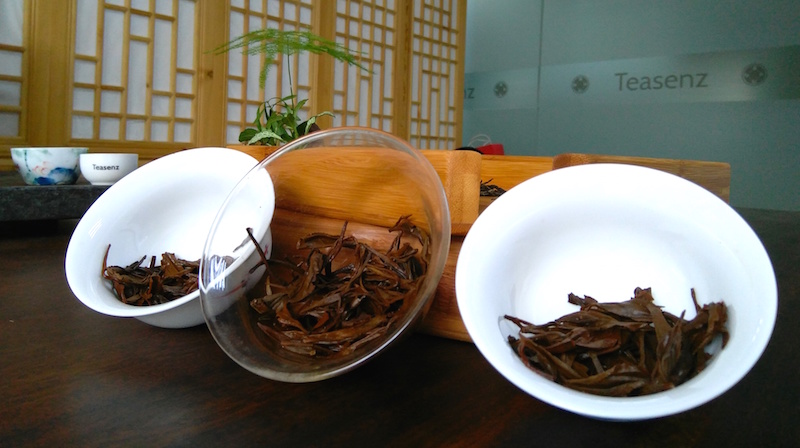On a daily basis we taste tea samples send by suppliers. We consider this as one of the best parts of our job. Especially, when the tea is good.
The Challenge
In this post, we want to share with you our experience of tasting a Dian Hong black tea from one of our Yunnan suppliers. Differently from our current Dian Hong, which has a curly appearance, the 3 samples in this blog are straight like needles. In China, we call this Song Zhen (‘松针’), which literally means ‘pine needles’.
When we receive samples from 3 suppliers that want to replace our current tea we’re selling, we call this internally ‘the challenge’. So let’s see if these samples are great!

Leaf Appearance
Traditional Chinese tea appreciation starts with appreciating the appearance of the leaves as well as smelling the aroma of the dry tea.
Based on the images above you can see that the teas are mainly black in colour, mixed with some golden buds. Because of this, some merchants also call such tea: golden needles tea. The differences between the samples are relatively small, though one has more golden buds then another.

Tea Liquor
After appreciating the leaf appearance, we head on to steep some cups of tea with a gaiwan. In a traditional Chinese tea ceremony, one should do a quick rinse of their tea, before steeping. This will wake up the leaves for a more optimised next brew. However, given the delicacy we’ll start tasting it from the first cup.
Let's not rinse this time
When doing serious tea tasting and considering the tea for sale in the Teasenz shop we generally don’t rinse the teas. The main reason is that, even though the first cup isn’t the best, it still can tell us a lot about the tea, and what we can expect in the next brew. In addition, not everyone rinses their tea. So, we’ll be better able to taste the tea in the way they taste it.
In the image above, you can see the tea liquor of the second brew. The tea liquor colour of all 3 samples are fairly similar. The last one is slightly darker. All of them have a bright yellow orange.
Below we’re pouring the third brew. It’s nice to see, how well it maintains it’s colour.

In the end we’ve managed to get 6 rounds of gaiwan brewing from this tea. We could’ve perhaps managed 8 rounds, but we’ve also got some other work to do….
Below a shot of the leaves after brewing. The first and third tea are very consistent as the tea is mainly made up of 1 bud 2 leaves. The middle one is similar, but contains slightly more broken leaves.

Overall, we liked the first one the most. When you drink it, you notice the flavour itself is light, but there's an explosion of aroma's in the mouth that blew us away. It's sweet, honeyish, but also as some notes of flowers. The third one did a decent job as well. It was, but we found it a bit too light in the first and last brew. And the second was decent. The taste is stronger and more in the foreground. It was like salty caramel with some hints of minerals you taste in a Wuyi rock tea. Some of us liked it a lot, others didn’t at all. It’s a risky one, but does this mean we shouldn’t launch it on Teasenz?
So will the current Dian Hong be replaced by these Song Zhen needles? Our current Dian Hong is also really really good, so we'll have to taste it again before deciding!